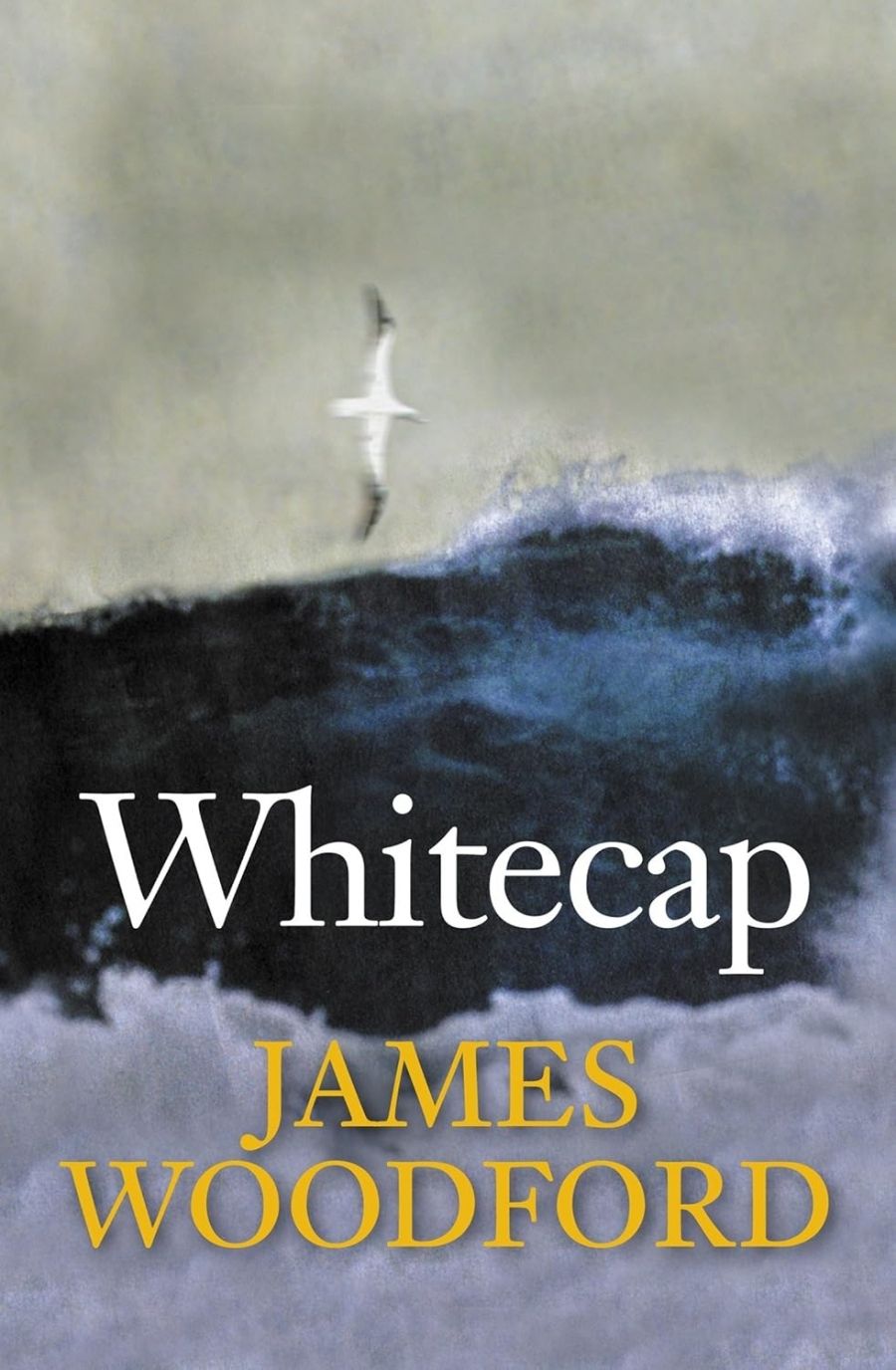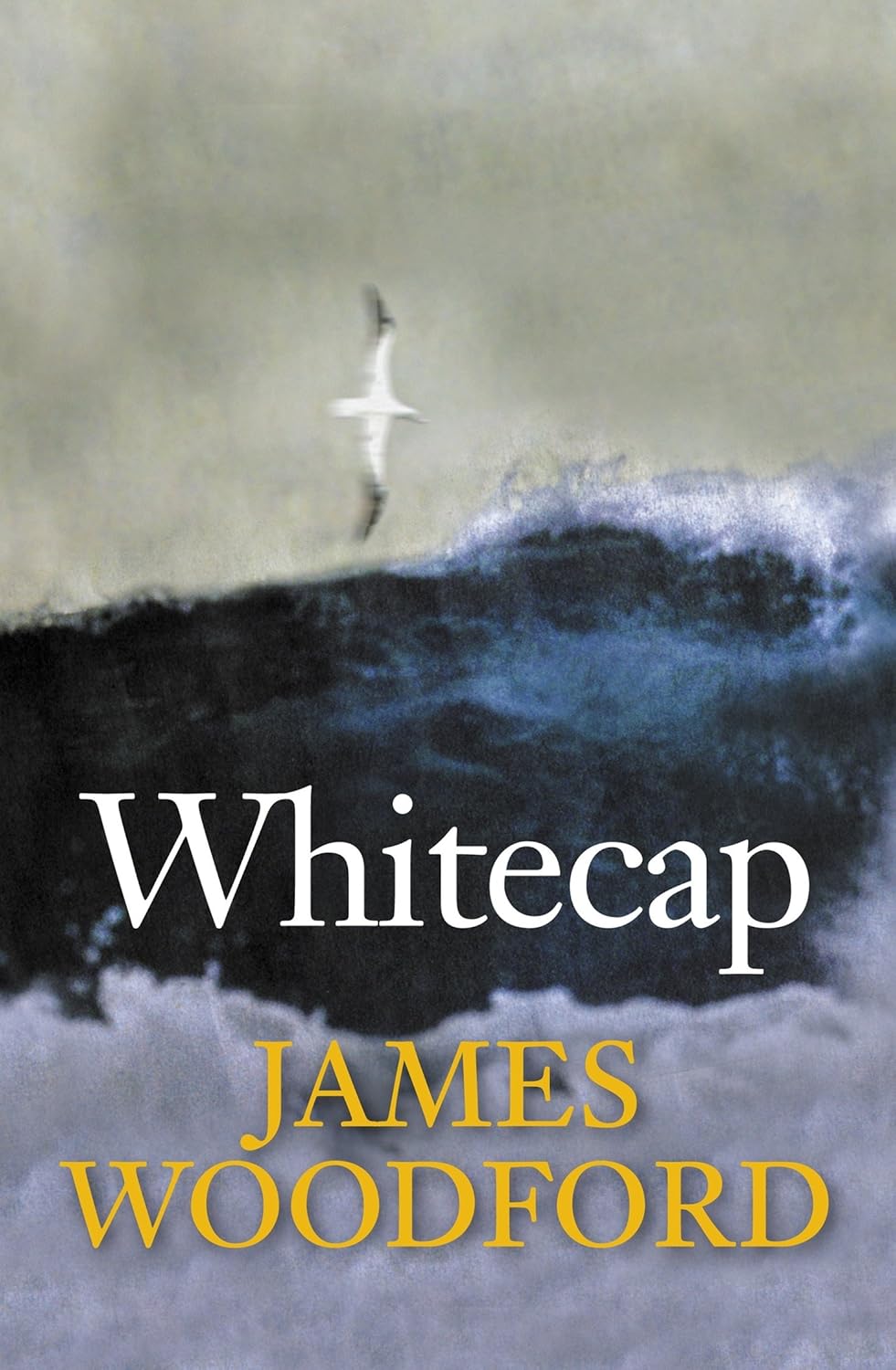
- Free Article: No
- Contents Category: Fiction
- Review Article: Yes
- Online Only: No
- Custom Highlight Text:
The wandering albatross is the largest of the Diomedeidae family, with a wingspan exceeding three metres. Apart from occasional colloquies over squid or fish, it flies alone for thousands of miles, joining other albatrosses only to mate every two years, always with the same partner. It can live up to sixty years, skimming silently over the southern ocean, seemingly with little effort.
James Woodford’s first novel, Whitecap, deals extensively with these denizens of the sea. Several of his characters are obsessed with them; one of them, Digby Stuart, who is writing a doctorate on wanderers, spends many winter hours at sea waiting to capture them, place metal identification bands on their ankles and, somewhat disturbingly, spray-paint numerals in day-glo red on their snowy chest feathers. The defacement of birds in the name of science is one of many authentic and well-researched snippets of information in the novel. This rigour is unsurprising, coming from an author who was for many years an environmental and science journalist for the Sydney Morning Herald and who has enjoyed considerable success with three works of nonfiction: The Wollemi Pine (2000). The Secret life of Wombats (2001) and The Dog Fence (2003).
- Book 1 Title: Whitecap
- Book 1 Biblio: Text, $32.95pb, 234pp
- Book 1 Cover Small (400 x 600):

- Book 1 Cover (800 x 1200):

Whitecap is set in the small fishing town of Bimbulla, on the New South Wales coast. It is a close-knit settlement, home to a large cast, all of them colourful and nearly all with nuggety nicknames. Tas and Whiting, Fillet and Deck, Dig and Buddha, Guru, Nipper, Bloke and Fish swell the dramatis personae, though only in a couple of cases do these tags reveal a character trait or historical event. Alongside the obsessive but careless Stuart (Dig) – an outsider who signals his masculine shortcomings by failing to build a proper frame for his shack, and keeping a tinny in poor condition – there is Jane White (Whiting), a feisty fisheries officer. Whiting has a scar across her face, though we never find out why.Tas, the butch trawler skipper, arm wrestles, belches and sinks unladylike quantities of bourbon, and Deck, the oldest of the fishermen on the wharf, brooding and grizzled, nurses deep sorrows. Clichés aside, it is Dig, Whiting, Tas and Deck who carry the narrative forward. They illustrate the pressures and prejudices of small-town living, as well as the plusses.
The story opens when Tas’s trawler nets becomes snagged on a large submerged structure that turns out to be a World War II Japanese floatplane. These small aircraft were catapulted from the decks of enemy submarines to spy on the Australian coast and hinterland in surprisingly large numbers. The discovery excites government officials and a couple of maritime archaeologists from Sydney. In another strand of the story, Jane and Dig, out banding albatrosses, discover one already ringed with an anklet from 1969. It appears to have been placed on the bird by Jane’s father, an ornithologist who died before she was born, and may give a clue as to how and why he met his premature end. Meanwhile, in a town divided, according to one character, between ‘meanies’ and ‘greenies’, Deck, the curmudgeonly old salt, is on the side of the former. Development plans include the demolition of a 200-year-old forest red gum and the construction of a marina, golf course and condominiums on the shore of Djangu Lake, which separates the village from the ocean. It is possible to be both a greenie and a meanie in Bimbulla, but at first this isn’t apparent. The tensions between environmentalists and those looking for personal prosperity arc deftly drawn, though one wonders if a fishing village would indeed be inhabited by so many eco-friendly inhabitants, including the mayor, the local policeman and the newspaper editor.
As the story of the Japanese floatplane and the albatross’s ankle band develop, the human drama deepens. Dig’s clumsy courting of Whiting, and the arrival of a rival, is one riff, as is Deck’s ill-treatment of his eleven-year-old grandson. The scenes between Deck and Billy are the best in the novel. Woodford has got under the skin of these two creations, something he fails to do with the others. Jane and Dig’s on-again off-again romance fails to ignite the reader, and other characters remain two-dimensional. With so many storylines and characters tumbling alongside each other, the narrative, over-reliant on dialogue, is often flat-footed. Each extraneous development (a near drowning, a lesbian affair, natural childbirth, real estate shenanigans) draws oxygen from the much-needed development of the central characters and events. One senses that, competing with its novelistic traits, this is a television script struggling for light and air; a new version of Sea Change, perhaps – with bigger birds.


Comments powered by CComment